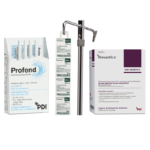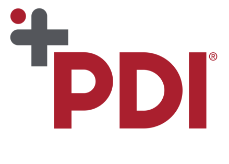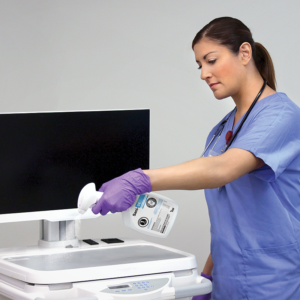Interventional Care


We notice that you are visiting us from . This site only services US-based visitors. Would you like to visit the site that is appropriate for your location?

New research, technology, and strategies in cleaning and disinfection have been on the rise throughout the last decade in the constant pursuit of improving infection prevention in healthcare settings. To keep professionals informed, our clinical team has put together some highlights of the pros and cons of several such technologies, including “no-touch” methods, the “bundle” approach, and continuously active disinfection, based on recent industry meetings, research, and discussions.
Traditional cleaning and disinfection practices, such as the use of mops, towels, and wipes are valuable and necessary in healthcare, but require a manual application and the risk of potential human error. The existence and persistence of biofilms, which are collectives of microorganisms that are highly resistant to antibiotics and other disinfectants, further complicate the infection control process in healthcare settings. Biofilms can persist on improperly cleaned textiles and surfaces and create a greater need for more advanced cleaning methods, including no-touch technologies.
There is no current substitute for the “tried and true” mechanical cleaning practices, however, no-touch technologies can enhance cleaning and disinfection overall. Future evidence-based research on these new technologies is still needed to further understand benefits and promote widespread use.
A clinical study to evaluate whether a continuously active disinfectant would inactivate virus 229E, a surrogate for SARS-CoV-2, on hard nonporous surfaces was presented at the 2021 APIC conference. Continuous active disinfection (CAD) is the application of a surface chemical that has intermediate-level disinfection on contact and then continuously disinfects potential pathogens that land on the surface thereafter.
In the study, the team of investigators from the University of North Carolina and the University of Arizona analyzed CAD against the human coronavirus 229E, using the “EPA Protocol Residual Self-Sanitizing Activity of Dried Chemical Residuals on Hard, Non-Porous Surfaces.” CAD demonstrated excellent sustained antiviral activity against the test pathogen. Results showed >4.5 log10 (99.99%) reduction within one minute after application on surface treated with CAD.
Continuously active disinfection (CAD) is a revolutionary technology that helps break the chain of surface re-contamination and minimize the risk of HAIs by forming a protective shield on surfaces. Sani-24® disinfectants are the first and only disinfectants approved by the EPA to kill ESKAPE pathogens for up to 24 hours on surfaces when used as directed.
As new virus variants and persistent HAIs continue to cause disease and sickness in healthcare settings, there is a vital need to continue to study and advance cleaning and disinfection practices. For more information and resources on best practices in infection prevention, review our PDI Education center.
Sources:
Cleaning with No-touch Technologies: Fact or Friction? (APIC 2021)
Antiviral Activity of a Continuously Active Disinfectant Against the Human Coronavirus 229E (APIC 2021)